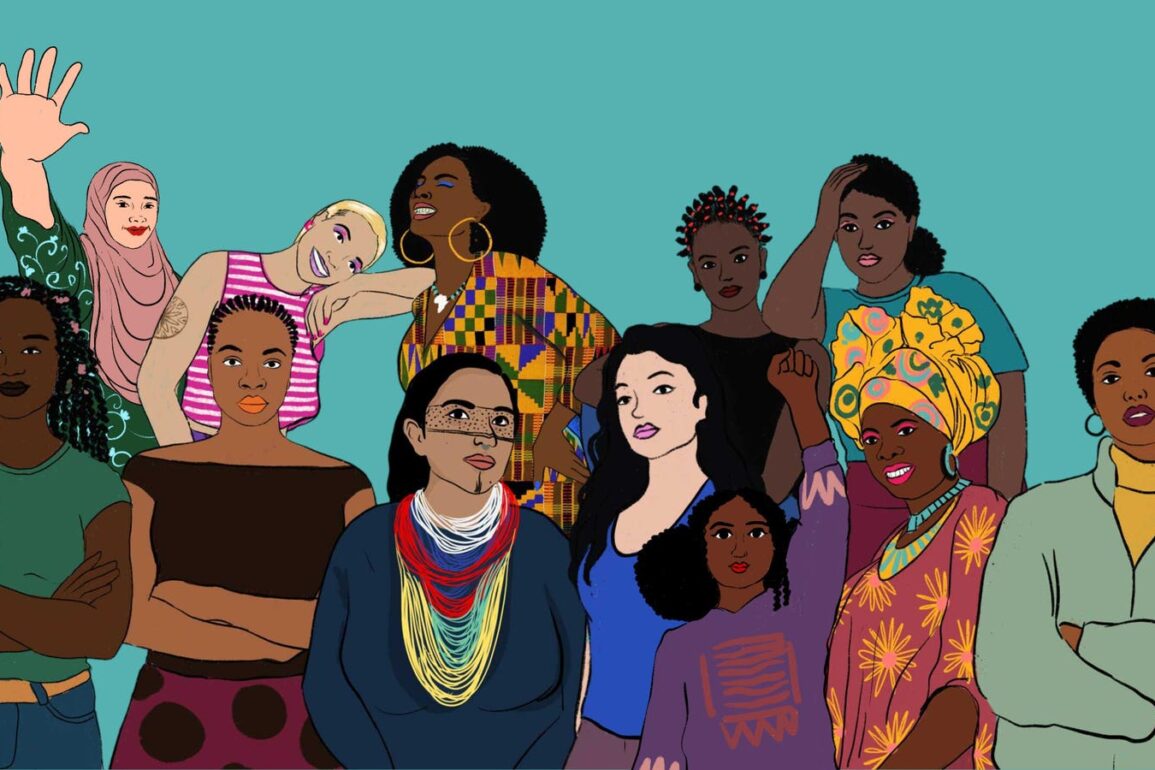
At a time when we face so many serious problems around the world—including violence, war, injustice, climate crisis and a rolling back of women’s rights and social justice issues—one untapped force for change that is often misrepresented and made almost invisible is the incredible potential and power of girls’ resistance and activism. It is in that spirit that sparked a new body of work, a website and book called Stories of Girls’ Resistance, the largest global collection of oral and narrative history of adolescent girls’ activism, which brings together over 150 individual stories from girls, women, and non-binary people ages 11 to 70 from over 90 countries across the world.
Initially created by Dr. Ramatu Bangura, executive director of the Children’s Rights Innovation Fund, Rosa Bransky, cofounder and co-CEO of Purposeful, and Jody Myrum, cofounder of Our Collective Practice, senior strategist at Purposeful and fellow at Shake the Table, the project emerged “through a collective recognition that girls’ stories are often told about and without girls, often erasing the complexity and fierceness of their stories, and sometimes contributing to narratives that can be harmful to their very existence.”
“Girls are positioned as passive victims in need of saving or as heroines standing up against all odds in a single act of defiance,” Myrum explains. “These narratives are radically different from girls’ lived experiences and disconnect them from their power and the resistance strategies they use daily to navigate the world around them. They also don’t reflect the incredible work girls are doing around the world to spark, lead and sustain social transformation, leaving this work starved for resources and exacerbating the violence and oppression girls face.”
Seeing that the existing inaccurate narratives were driving resources and support structures that were failing girls, Bangura, Bransky and Myrum wanted to provide a counter narrative, “one deeply grounded in the stories of girls across time, place, identity and social justice struggles,” says Bransky. “Stories of Girls’ Resistance unpacks why girls resist, how they resist and the profound impacts their resistance has had on the world, really since time began.”
As Bangura put it, “We wanted to capture a wide range of stories and experiences that would celebrate girls and their power. We wanted to capture the complexity, beauty, resilience, resourcefulness and mundanity of girls’ lives and resistance as a starting point for shaping the work we seek to do with and for them.”
Stories of Girls’ Resistance book cover
Vidushi Yadav, artist
Through a multi-year process, Bangura, Bransky and Myrum, along with project team member Ruby Johnson, partnered with 12 story curators across nine regions of the world who are deeply connected to girls’ work to collect the stories. Curators focused on ensuring people from diverse countries and underrepresented groups—including Black and Indigenous women and girls of color and queer and non-binary people—had space to tell their stories. Through collective analysis sessions, the team skillfully weaved the stories together and worked with illustrators who created vibrant artwork to help bring the stories to life. The website invites visitors to explore both this collective analysis and the unique ways in which each region brought each individual story to life through poetry, written word, theater and beyond.
The collection offers valuable insight into what it means to be a girl in the world today and the many ways and reasons girls resist. As the authors write in the book, “Girls resistance—formal and informal, individual and collective, within generations and intergenerationally—cuts across all struggles for justice and freedom. They resist at the intersections of age, gender, land rights, climate justice, LGBTQIA+ rights, anti-war movements and so much more. Girls resist marriage, violence, they fight to stay in school, they push back against how other’s name them, and shame them, and seek to separate them from the platforms and resources that are their right. They fight to take up space, to access space, to re-shape space. Girls resist because to resist is to live, to breathe and to be in the world as a girl.”
Stories of Girls’ Resistance is grounded in global South-rooted feminist epistemologies, in particular that of narrative knowing, oral herstory and counter-storytelling, which offers an opportunity to gather and uplift stories from those who have been most often marginalized or whose voices are silenced or ignored in traditional knowledge production.
“Storytelling is a powerful tool of resistance,” says story curator Françoise Moudouthe. “Stories remind us that we’re dealing with people’s lives, not data and concepts, so we have to embrace their complexity and messiness, rather than avoid it. Storytelling is also a wonderful way to understand what can actually bring about change. If you ask people who are directly affected by patriarchal oppressions to tell you about their agency rather than their suffering, you get a much better understanding of what the issues are, and you can come up with more impactful solutions.”
Through archiving such a diverse and expansive collection, key commonalities emerged, including the various forms of violence that are universal and pervasive in girls’ lives. “This violence operates at the level of the personal, most often physical, sexual and psychological violence in the home; the structural and cultural level, such as the crushing weight of white supremacy, ableism, homophobia and transphobia, sexism and misogyny, and gendered poverty; and the institutional and collective levels, including what happens to girls living under repressive regimes, occupation, armed conflict and displacement,” the authors state.
But the book also shows how girls, even in the face of violence and hardship, find meaning and hope in their resistance and move to a place of power, often joining together to organize, connect with broader movements for justice and contribute to lasting change.
“One of the most powerful insights from this collection of stories is just how present girls have been in almost every movement for liberation in the last millenia,” Bransky reflected. “Girls have always been there, yet so often their contributions are deliberately obscured or hidden from view. As we look across all of these stories, we begin to see the critical contributions of girls who resist, from a 15-year-old mom challenging a stigmatizing campaign about young mothers in the U.S. to fighting for education equity in South Africa to lobbying the government for safe housing in India to overturning repressive governments and toppling dictators.”
Myrum explained that they were careful not to romanticize girls’ resistance: “It’s not about a single moment or act of resistance but how girls are required to resist in big and small, and often invisible, ways every day,” she said. “Part of what’s so profound about this collection of stories is the myriad of ways girls are resisting in every corner of the world, and what might be a small act of resistance in one context might be met with extreme danger in another. From secretly learning to read to questioning the gendered burden of domestic duties at home to their choice in hairstyles and clothes to picking up a microphone at a protest to leading revolutions, these stories show us how girls are resisting the many abuses of power they experience in different ways.”
When asked what they hope to achieve through this work, Bangura said, “Our purpose is always to make more resources—funding, training, networking, etcetera—available to girls that are informed and shaped by how they actually exist and resist. We are in a moment where so many of the social justice gains made in the last 100 years are being pulled back. If we can contribute to energizing young activists to link them to community and legacies of movements, we’ve done our part. We also want to encourage people in power to seek the counsel and direction of girls because their inclusion means that the solutions we seek will work for more people.”
Myrum responded this way: “Our greatest hope is that girls don’t bear the burden of resistance. We dream of a world where girls are valued, respected and celebrated. Where girlhood is filled with safety, freedom and boundless opportunities. Stories of Girls’ Resistance brings together so much wisdom from girls, women and non-binary people across the world, and we hope it helps us get there because it is changing how people understand girls and, therefore, how they fund them, how they make policy decisions, how they design programs, how they are represented in stories, movies and TV shows, and how they treat them—in ways that resource and support their power and their resistance strategies.”
“We also hope that girls can see themselves in these stories and it’s a way for them to connect their own stories to a larger story about systemic oppression and resistance,” added Bransky. “There is something so powerful about that moment when someone begins to understand their own experience is not an individual one but a collective one that is deeply systemic.”
Bangura, Bransky and Myrum also emphasized that this body of work is only the beginning. “We see this as part of a much larger political project to transform people’s understanding of girls’ resistance and what this means for their work. We want people to read the stories, and then do something different as a result,” expressed Branksy.
Myrum offered this additional insight and call to action: “Every single story of girls’ resistance matters because they form a collective narrative of how the world is transforming. They remind us of what needs to change and what is possible when we support and trust girls. The question then comes back to all of us: Are we willing to listen to their stories? And more importantly, are we willing to support their needs, dreams and visions of change?”
For more information, visit GirlsResistance.org. Pre-order the book here.
This post was originally published on this site be sure to check out more of their content.









